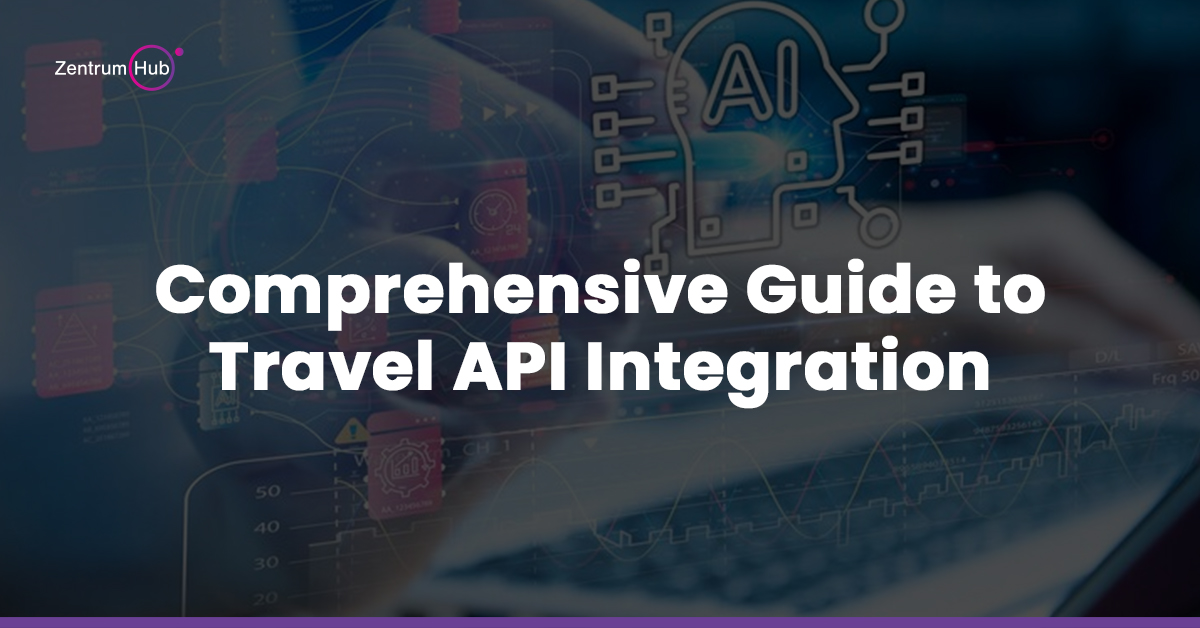
Contents
If you’re in the travel industry, you understand how crucial it is to offer seamless booking services.
Travel API integration has become a game-changer for businesses looking to provide real-time access to flights, hotels, car rentals, and other services.
Whether you’re an established travel agency, an online platform, or a startup, integrating with travel APIs allows you to expand your offerings without building everything from scratch.
This guide dives deep into the essential aspects of Travel API integration, including pricing models, costs, timelines, and optimization strategies.
By the end of this guide, you’ll have a clear understanding of how to approach API integration effectively and what to expect at every stage. Let’s explore how Travel APIs can elevate your travel business.
At its core, travel API integration is the process of connecting third-party travel services (flights, hotels, car rentals, etc.) into your platform via Application Programming Interfaces (APIs).
APIs act as communication bridges between different systems, allowing your platform to offer external services without directly managing inventory or building those services in-house.
By integrating with travel APIs, you can provide users with real-time information on availability, prices, and bookings, all without needing to maintain separate agreements with multiple suppliers. Instead, you tap into a centralized network of suppliers through their APIs.
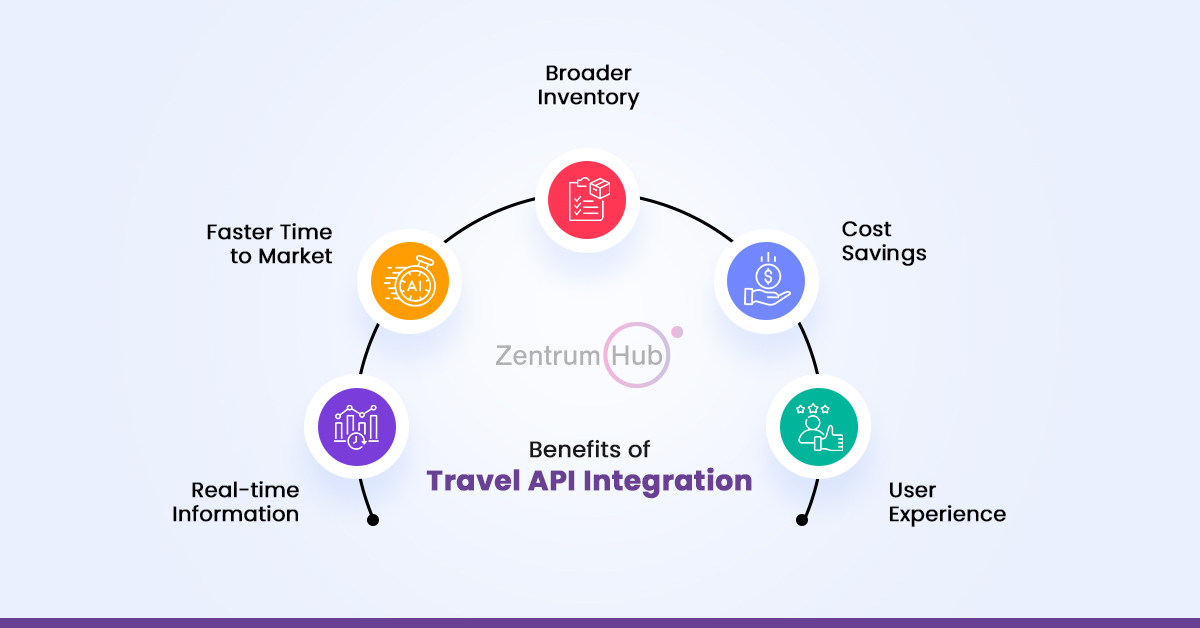
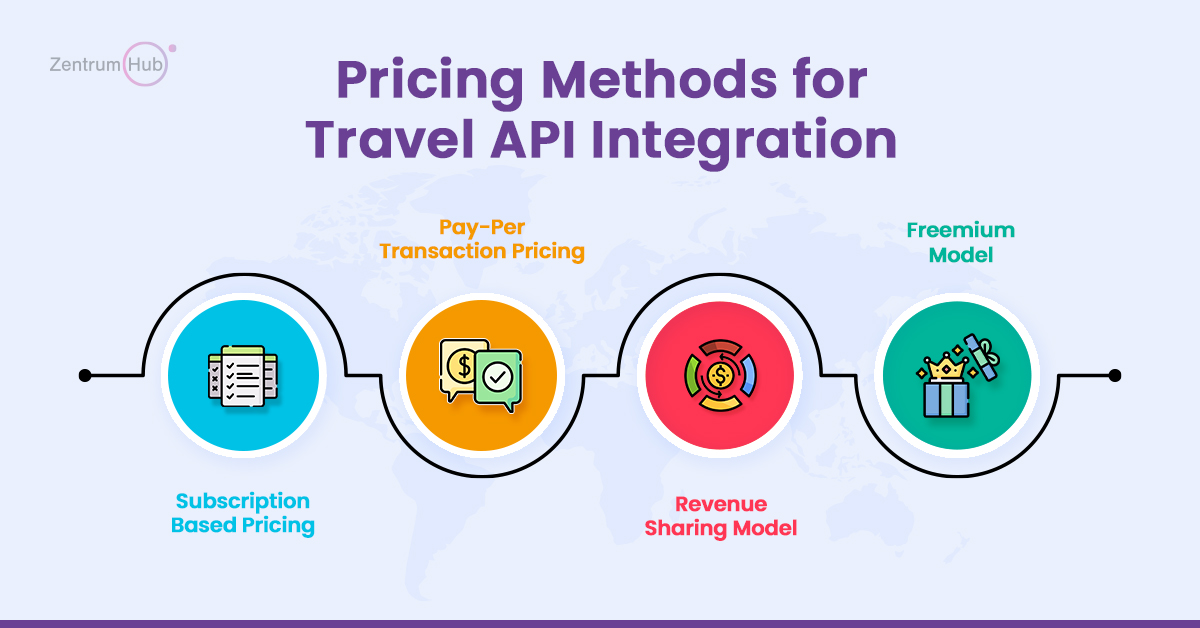
When planning to integrate travel APIs, one of the most important considerations is pricing. Travel API providers often offer several pricing models based on usage, volume, and services offered.
It’s essential to choose the right pricing model for your business to avoid unexpected costs or underutilizing the API’s capabilities.
Subscription pricing is one of the most straightforward models. The API provider charges a flat fee, either monthly or annually, based on your usage. Typically, this fee includes access to a certain number of API requests, with additional charges for requests that exceed the set limit.
Example: A hotel booking API might charge $1,000 per month for up to 20,000 API requests. If you exceed that limit, you might move to the next tier, costing $2,500 for 50,000 requests.
Pay-per-transaction models charge you for each completed booking or transaction processed through the API. This model can be beneficial for smaller travel businesses that may not have consistent traffic.
Example: A flight booking API may charge $2 per booking. If your platform processes 1,000 bookings per month, your API costs will be $2,000.
In a revenue-sharing model, the API provider takes a percentage of each booking’s revenue. This model works well for startups or platforms that have low initial booking volumes, as it eliminates high upfront costs.
Example: A car rental API might take 5% of each rental’s revenue. If your platform generates $200,000 in monthly car rental bookings, you would owe $10,000 in revenue sharing.
In the freemium model, the API provider offers basic access for free, often with limited features or a cap on the number of API requests. More advanced features or higher limits require a paid plan.
Example: An activity booking API might offer free access for up to 1,000 API requests per month. After that, you might need to upgrade to a plan costing $500 per month for 10,000 requests.
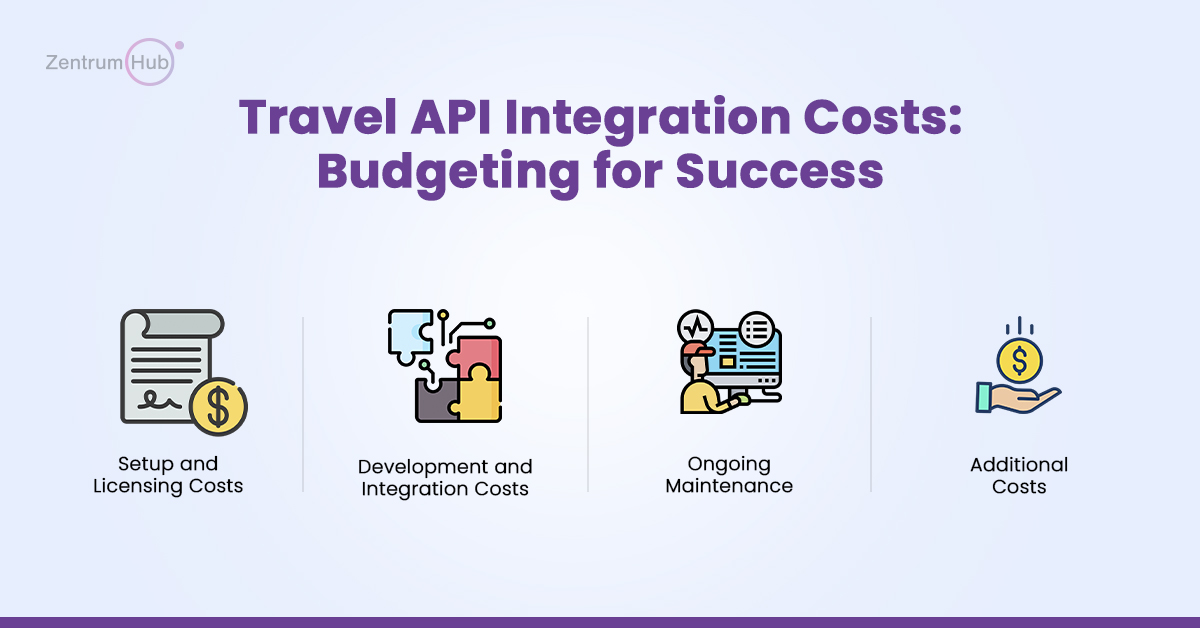
The cost of integrating travel APIs goes beyond the pricing model of the API itself. When budgeting, you need to account for several factors including setup fees, development costs, and ongoing maintenance.
Some API providers charge an initial setup fee, which covers the cost of integrating the API into your platform. These fees can range from a few hundred dollars to several thousand, depending on the complexity of the API and the level of support required during the integration process.
Additionally, some providers may charge licensing fees, especially if they offer exclusive access to certain types of travel inventory. Licensing costs are often built into monthly or annual subscription fees, but in some cases, they may be separate.
Beyond what the API provider charges, you’ll also need to account for the development work required to integrate the API into your platform. The complexity of this task depends on several factors:
If you have an in-house team, costs will be lower, as they are based on man-hours. Outsourcing development can cost anywhere from $10,000 to $50,000 depending on the complexity.
After the initial integration, maintenance and updates will be necessary to ensure the system runs smoothly. Ongoing costs can include:
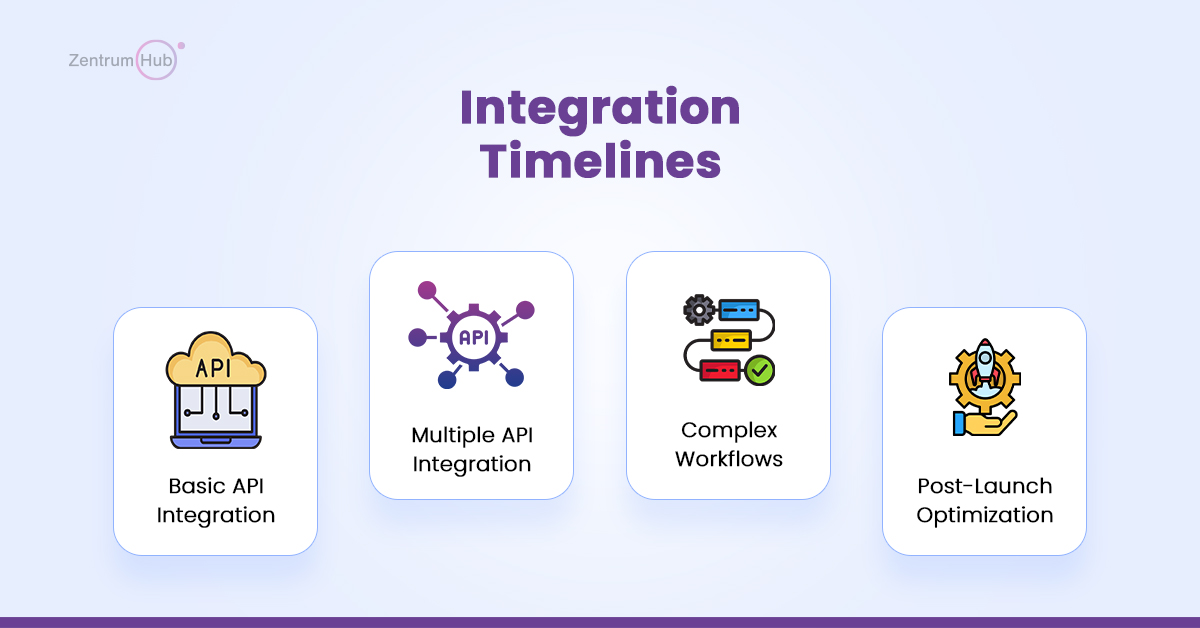
Travel API integration isn’t an overnight process, and timelines can vary widely depending on the complexity of the project, the number of APIs involved, and the technical expertise available. Below is a breakdown of average timeframes based on common variables.Travel API integration isn’t an overnight process, and timelines can vary widely depending on the complexity of the project, the number of APIs involved, and the technical expertise available. Below is a breakdown of average timeframes based on common variables.
For small to medium-sized businesses integrating a single API (e.g., flight booking), the process is relatively straightforward. Assuming the API is well-documented and the development team has experience with travel API integration, the task could be completed in as little as 1-2 weeks.
For small to medium-sized businesses integrating a single API (e.g., flight booking), the process is relatively straightforward. Assuming the API is well-documented and the development team has experience with travel API integration, the task could be completed in as little as 1-2 weeks.
Once the API integration is live, it’s important to continually optimize the system. This includes monitoring performance, ensuring scalability, and making tweaks to enhance user experience.
Optimization efforts can be ongoing, and improvements may be rolled out gradually over months or years.
If your travel platform requires a high level of customization, such as advanced search filters, personalized travel recommendations, or complex booking workflows, the timeline will expand. Testing these features to ensure they handle high traffic and function as intended is also time-consuming.
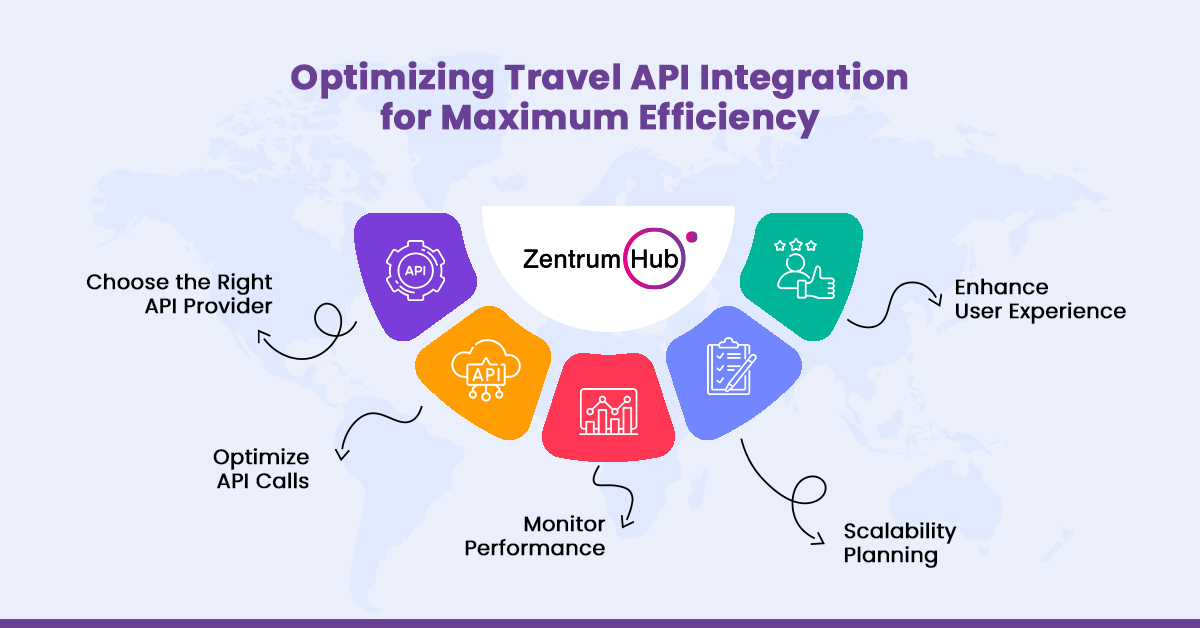
While integrating a travel API brings a lot of benefits, maximizing its value requires ongoing optimization. Here are some strategies to ensure your API integration runs efficiently and cost-effectively.
Not all API providers are the same. It’s essential to choose an API provider that offers a good balance between cost, inventory, and support. When selecting a provider, consider:
APIs often charge based on the number of requests or transactions. Optimizing the number of API calls can lead to significant savings. You can do this by:
Real-time monitoring of API performance is essential. This includes keeping an eye on:
As your travel platform grows, so will your API usage. Ensure your system is scalable and can handle increasing traffic without slowing down or crashing. This involves:
A smooth user experience keeps travelers on your platform. Ensure that bookings are fast, responsive, and seamless. Optimize:
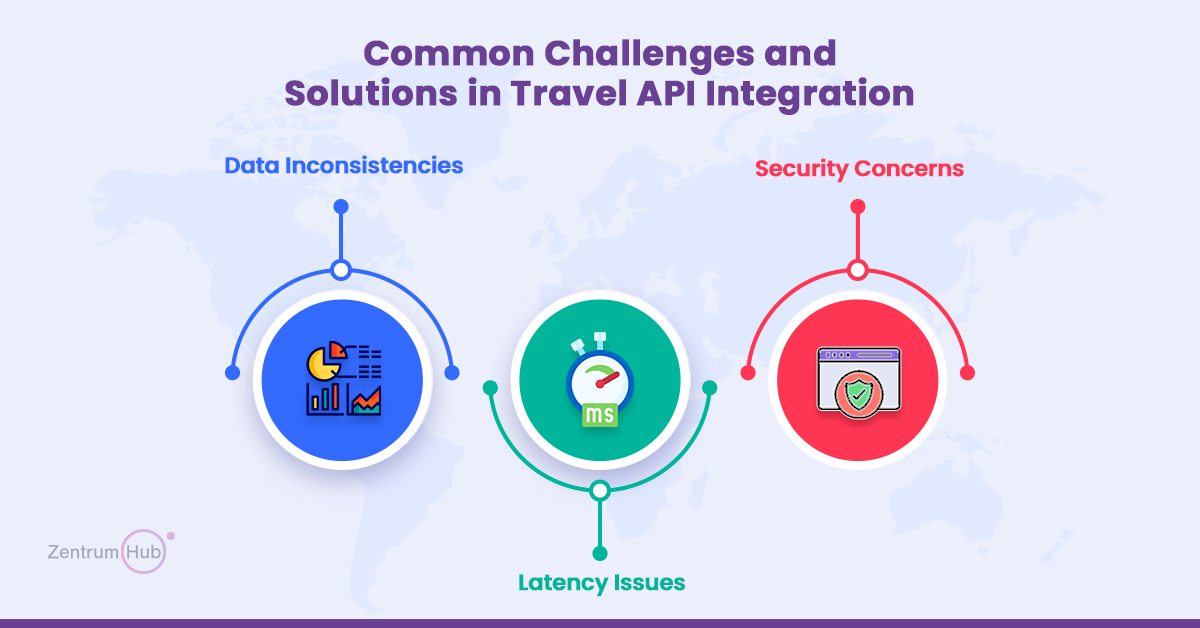
Travel API integration comes with its challenges, but they can be managed with the right planning and execution. Here are a few common issues and how to overcome them.
When integrating multiple APIs (flights, hotels, cars, etc.), data inconsistencies can arise. For instance, different APIs might format dates, times, and currencies differently. The solution is to implement robust data normalization processes to ensure consistency across all services.
Travel platforms need to provide fast, real-time information. High latency, or slow response times, can frustrate users and lead to abandoned bookings. Optimize your platform by:
Handling sensitive user data (e.g., payment information, personal details) brings security risks. To protect your customers and your business:
Travel API integration is not just about adding a feature to your platform—it’s about transforming your entire service offering.
Whether you’re looking to expand your inventory, improve customer experience, or scale your business, integrating APIs allows you to offer more value with less effort.
By understanding the various pricing models, budgeting for both initial and ongoing costs, planning integration timelines, and optimizing your platform, you can make the most of travel API integration.
With the right approach, this technology can take your business to new heights in a competitive travel market.
